![]() What exactly happens when we open and then close the fridge door? Obviously, the light switches on and off, but how do temperature and power consumption vary? To be frank, this question is not quite innocent. I started a while back to have doubts about how well, or bad, my fridge was working. I have therefore decided to get to the bottom of it. And I made some rather interesting discoveries.
What exactly happens when we open and then close the fridge door? Obviously, the light switches on and off, but how do temperature and power consumption vary? To be frank, this question is not quite innocent. I started a while back to have doubts about how well, or bad, my fridge was working. I have therefore decided to get to the bottom of it. And I made some rather interesting discoveries.

What truly happens inside the fridge?
I put a Yocto-Watt on the refrigerator power supply and I used a Yocto-Thermocouple to measure the inside temperature. The idea was to directly send the data to ThingSpeak and to obtain temperature and power consumption graphs without having to code a single line.

A Yocto-Thermocouple and a Yocto-Watt
Rather than installing in the kitchen a computer dedicated to this task, I used a YoctoHub-Ethernet.

How to publish on Ethernet a fridge's temperature and consumption without using any PC
The YoctoHub-Ethernet behaves exactly like a VirtualHub and can be powered through the Ethernet socket (PoE). So I only needed to bring a single Ethernet cable inside the kitchen. The YoctoHub-Ethernet is currently at the beta-test stage but should be available for sale shortly.
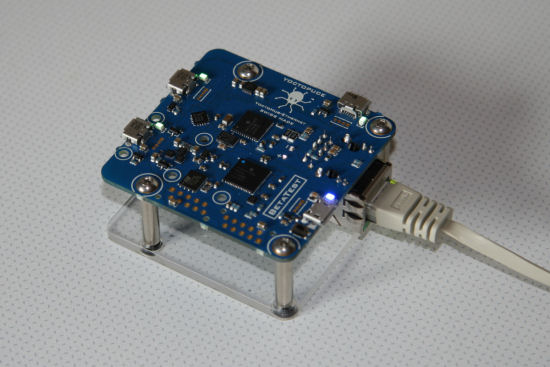
The YoctoHub-Ethernet (beta version) can be powered directly through the Ethernet cable
I connected the Yocto-Watt directly on the fridge power supply. As the enclosure of the Yocto-Thermocouple is magnetic, I simply stuck it on the fridge door. The thermocouple wires are thin enough to fit between the door and the main body of the refrigerator.

A USB magnet :-)
My refrigerator also includes a freezer, so I measured the two compartments. You only need to tape the end of a thermocouple in each compartment.
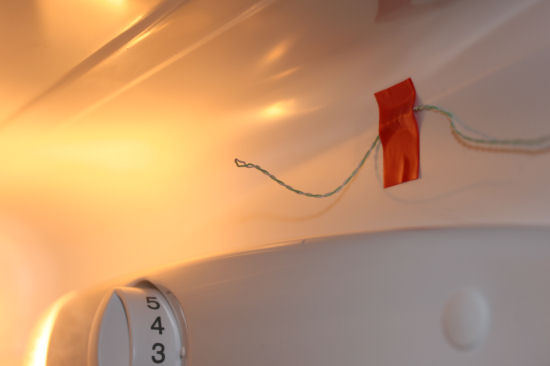
Fixing the thermocouples
After having configured the YoctoHub-Ethernet to send the data on ThingSpeak, I only needed to wait to see what happened.
After a few hours, here was the verdict: my fridge was not doing well at all. Apparently, it worked on 24 hour cycles: it churned like crazy during 18 hours to lower the temperature, and then nothing during about 6 hours, letting the temperature rise to values close to dangerous for the fridge content.
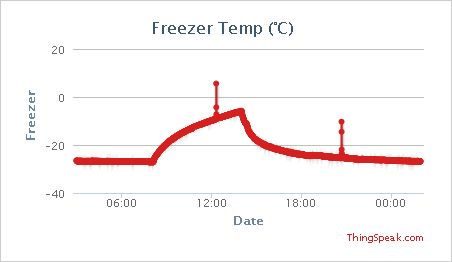
Temperature in the freezer compartment, peaks correspond to the door opening
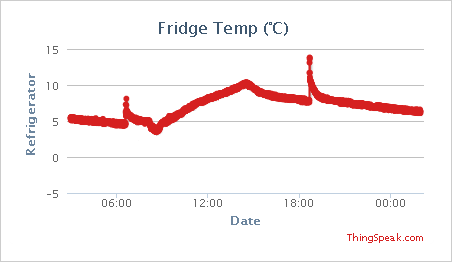
Temperature in the refrigerator compartment
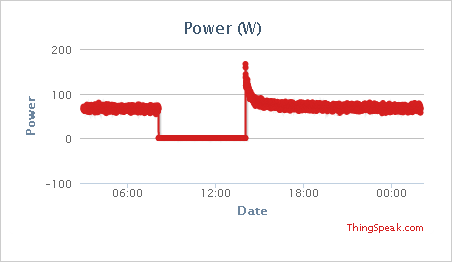
Power consumption
And to confirm this diagnosis, my fridge died two weeks after the start of this experiment. This being said, as it had reached the worthy age of 17 years, it was the perfect opportunity to buy a brand new one and to compare them. I have heard that fantastic improvements have been made on refrigerators in the last ten years: recent models consume much less power.
The fact is that my new fridge works on much shorter cycles.
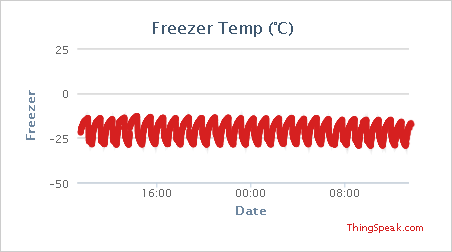
New fridge: Temperature in the freezer compartment
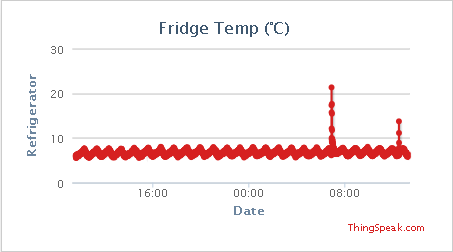
New fridge: Temperature in the refrigerator compartment
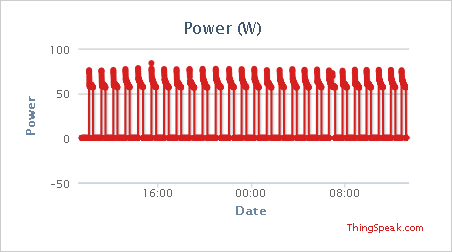
New fridge: Power consumption.
This simple experiment enabled me to bring out a few facts:
1 - In the opposite to what one may think, the temperature inside a refrigerator is far from being constant over time, it cycles over a relatively long range. Digital thermometers that you see on some freezers must be seriously averaged.
2 - Opening the door has an immediate consequence on the refrigerator inside temperature. This influence is much more important in the refrigerator compartment, probably because the door is larger than in the freezer.
3 - I am a bit skeptic about the fantastic technologic improvements brought to the refrigerators. Sure, the new fridge consumes less than the old one (25W against 56). But I think it's mainly because its walls are significantly thicker. With the same external dimensions, the new fridge has a much lower capacity.


